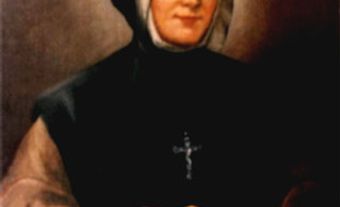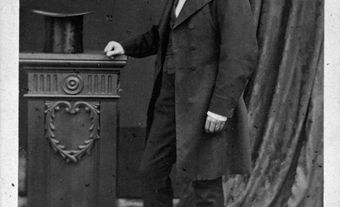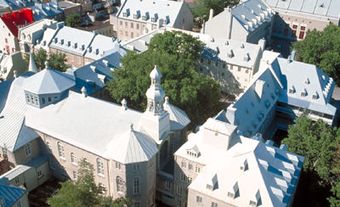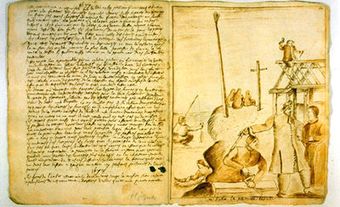Saint Joseph’s Oratory of Mount Royal is a minor basilica of the Roman Catholic Church. The Oratory is located on the northwestern slope of Mount Royal in the city of Montreal. (See also Côte-des-Neiges.) It is the tallest church in Canada and one of the largest domed structures in the world. The Oratory is an important landmark and symbol of Montreal, as well as a tourist attraction. Pilgrims come to visit it from all corners of the world. It attracts about 2 million visitors every year.

History
The history of the Oratory is closely tied to the life of Brother André (also known as Saint André Bessette after his birth name, Alfred Bessette), a lay brother of the Congregation of the Holy Cross. (See also Catholicism in Canada.) Brother André is widely regarded as a miracle worker, although he himself attributed his miracles to Saint Joseph, to whom he was devoted and who is the patron saint of Canada. By the early 20th century, Brother André had become so internationally renowned that his work as a porter at Collège Notre-Dame de Montréal was disrupted by the many visits that he received from his faithful followers.
In 1904, the Congregation authorized Brother André to build a small chapel on a piece of land across the street from the college so that he could devote himself to his followers full-time. This chapel still stands, but was moved to make way for the gigantic oratory that was built in its place. Brother André’s original chapel was enlarged several times between 1904 and 1914. During this period, a presbytery was added, as well as a kiosk where the growing numbers of visitors could purchase devotional objects.
In 1914, the Congregation of the Holy Cross authorized construction of the Oratory, starting with its crypt. This crypt, which forms the base of the Oratory, was completed in 1917 and contains a church that seats 1000. On 31 August 1924, the cornerstone of the future basilica was laid before a crowd of 35,000.
Work on the basilica’s foundation began in 1926, and a large part of the base of the structure was completed in 1931. In the following years, construction of the basilica was interrupted by the Great Depression. Brother André died on 6 January 1937 and so did not live to see construction of his oratory completed. The cross atop the outer dome was consecrated on 1 August 1941. Construction of the Votive Chapel and Brother André’s tomb began in 1946 and was completed in the following years. In 1954, Brother André’s original chapel was moved for the second, final time, to its current location opposite a parking lot, southwest of the Oratory. (See also Westmount.) On 17 February 1955 the carillon was opened. Then, on 19 March of the same year, the Oratory was raised to the rank of a minor basilica. On 9 August, a statue of Brother André was unveiled to the public. In the following year, the basilica was officially, permanently opened as a place of worship. In 1960, the church’s great organs were consecrated. The interior of the basilica was completed in 1967. In 1979, a lighting system was unveiled, bathing the oratory in coloured light. On 23 May 1982, Brother André was beatified by Pope John Paul II, who came to pray at Brother André’s tomb on 11 September 1984 during his visit to Montreal. Brother André was canonized in 2010. (See Saints.)
Architecture
The Oratory as a whole is in the Beaux-Arts style and is composed of the classically-inspired, limestone-faced crypt and the monumental, granite-faced Basilica, with its Italian Renaissance-inspired design. (See Religious Building.) The interior of the basilica contains 2028 seats. St. Joseph’s Oratory is a National Historic Site of Canada and is recognized as a monument of the cultural heritage of Quebec.When the dome of the Oratory was being designed, a variety of models were considered, including the dome of St. Peter’s Basilica in Rome. But the dome that was finally built more closely resembles that of the Cathedral of Santa Maria del Fiore in Florence, with its double-shelled structure, composed of an inner dome and an outer dome with a space between the two.
Curious Features, Unique Traditions and Other Distinctive Traits of the Oratory
The Oratory has the distinction of being the only building in Montreal that is allowed to rise higher than Mount Royal. Because of its prominent location, it can be seen from considerable distances, including locations off the Island of Montreal.
Catholics who are especially religious may choose to climb the grand staircase leading to the basilica on their knees, as a sign of devotion and penitence.
Crutches once belonging to people said to have been healed by Saint Joseph through the miraculous intervention of Brother André now adorn the walls of the Oratory.
Brother André’s heart is preserved inside the Oratory. It was stolen in March 1973 and recovered 21 months later.
Remains of Indigenous People
During excavations begun in September 2019, the remains of three Indigenous people (two women and a child) were found beneath the parking lot at the Oratory. These remains dated from before the period of European colonization. With the help of archaeologists, these remains were carefully removed and given over to the custody of the Mohawk Council of Kahnawake. (See Kanyen’kehà:ka.) Remains of Indigenous people are often found on and around Mount Royal, which shows the importance, if not the sacred nature of the mountain for Indigenous peoples. (See Indigenous Archaeology in Canada.)

 Share on Facebook
Share on Facebook Share on X
Share on X Share by Email
Share by Email Share on Google Classroom
Share on Google Classroom



